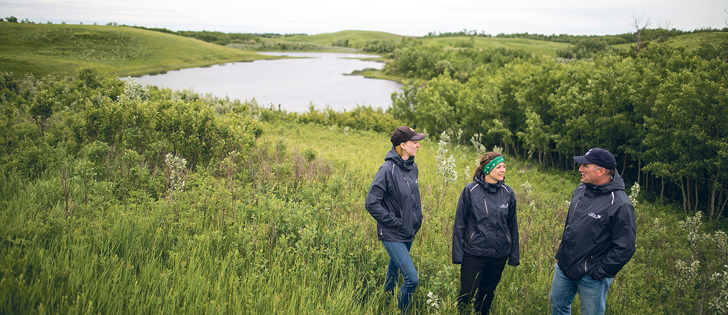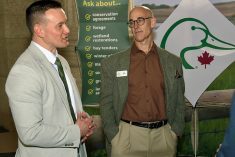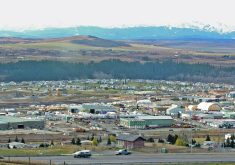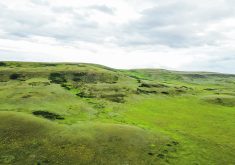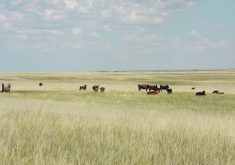Bob Thomson remembers looking at a 158-acre property north of Stettler, Alta., about 20 years ago, accompanied by his then-two-year-old daughter.
Landowner Harry Green had given him a week to consider buying the parcel, so Thomson put his daughter in a backpack and went to explore it.
“We walked out on the ice — it was wintertime — and had a little skate on the ice. I asked her … ‘do you think your dad should buy this quarter?’ She said, ‘absolutely, Dad.’ You don’t argue with a two-year-old-girl in your backpack.”
Read Also

Farming Smarter receives financial boost from Alberta government for potato research
Farming Smarter near Lethbridge got a boost to its research equipment, thanks to the Alberta government’s increase in funding for research associations.
On Sept. 8, the Nature Conservancy of Canada announced the purchase of that property from Thomson and his wife, Cheryl.
It is a parcel of permanent and semi-permanent wetlands, grassland and aspen forest 22 kilometres north of Stettler along Highway 56, east of Buffalo Lake.
The Thomsons used the land for grazing but took care to rest it periodically to preserve the health of habitat, water quality and wetlands and support its biodiversity.
“We treated it with respect because it was such a unique parcel,” said Thomson, who is a habitat biologist.
The property’s wetlands are home to a wide variety of waterfowl and shorebirds, as well as an estimated 70 to 80 breeding duck pairs per square mile.
Among the less common birds seen at the site are Forster’s tern, Virginia rail, yellow rail and colonies of great blue heron.
It also hosts elk, moose, deer, cougars, coyotes, weasels and other small mammals and amphibians.
Thomson said it is home to 100-year-old birch trees, native grasses, wild roses, chokecherries, saskatoons, raspberries and gooseberries.
He and his family have also found lilies and yellow orchids on the property. With hills as high as 100 metres, the terrain and varying elevation results in a wide variety of trees, forbs and grasses along with the wildlife it supports, said Thomson.
Financial details of the sale were not disclosed.
“It wasn’t just about the money. It was more to do with it going to the right hands,” Thomson said about the NCC.
“They were fair. I’m happy with the decision that I’ve made. I thought they would be the best stewards for the native grasses and forbs. They would have a priority of doing vegetative inventories, and their high view of biodiversity really appealed to me.”
In a news release, the NCC said the deal was made possible with support from the federal Natural Areas Conservation Program and funds from Repsoil Oil and Gas Canada, the American Friends of NCC, and the U.S. Fish and Wildlife Service.
Thomson said he continues to have access to the property, as will other members of the public.
“People have just got to stop and just enjoy it for a second, take time away from their business portfolios and just ride a horse and see it,” said Thomson.
“Now there’s a chance for schools and kids … to go there and they can park and walk and go there anytime they want, to learn. And if they don’t enjoy it, they probably won’t believe in conservation.”
NCC owns other properties in the Buffalo Lake area. In Alberta, it owns more than 280,000 acres of property it deems ecologically significant.




